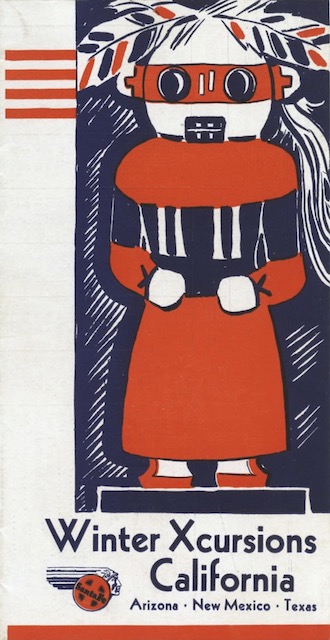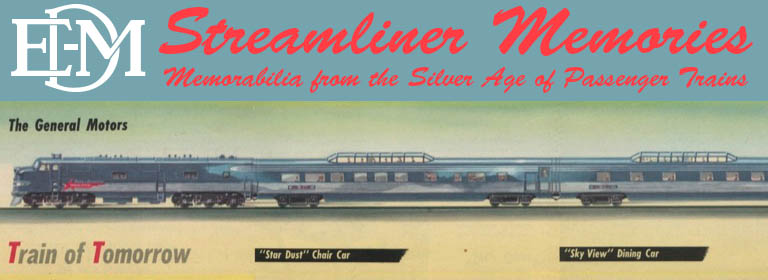Like Florida, California was once considered a winter tourist destination, so winter fares were higher than in the summer. This brochure lists “Xcursion” round-trip fares from points in the Midwest and East to various cities in California and New Mexico, as well as Mexico City and Phoenix.
 Click image to download a 1.8-MB PDF of this brochure.
Click image to download a 1.8-MB PDF of this brochure.
Pricing was a lot less sophisticated than it is today, when Amtrak and many airlines and bus companies sell the first tickets on any given trip for low prices and the prices increase as the planes, trains, or buses fill up. Instead, in early 20th century, all tickets on a given class of service went for pretty much the same price per passenger-mile, though there might be discounts for round trips and extra fares for deluxe trains.
We can compare the prices in this brochure with winter prices in the February, 1926 timetable and summer prices in the August 1928 timetable. In this 1931 brochure, a round-trip between Chicago and California cities was $143.78. That’s unchanged from 1926. But the summer Xcursion fare was quite a bit lower at just $90.30, a 37 percent discount from the winter fares.
Some of the fare quotes from East Coast cities list alternate routes. Bostonians and Portlanders could choose between travel via Albany or Montreal; Montreal was a few dollars less. Springfield, Massachusetts residents could make the same choice, but for them Montreal was a little bit more. New York City residents could take the “standard routes” or “differential routes”; differential was a little bit less. Presumably “differential” meant taking a railroad such as the Erie where the trip would take longer than over a “standard route” such as the New York Central or Pennsylvania.
Fares to Mexico City were slightly lower than to California cities. Santa Fe’s route was to take Santa Fe trains to Milano, Texas, connecting with the International & Great Northern to Laredo via San Antonio. From there, the Ferrocarriles Constitucionalistas went to Mexico City. For what it was worth, a through sleeping car went between San Antonio and Mexico City. From Chicago, the trip to Mexico City via this route was 2,334 miles, slightly more than Santa Fe’s route to Los Angeles but slightly less than its route to San Francisco.
